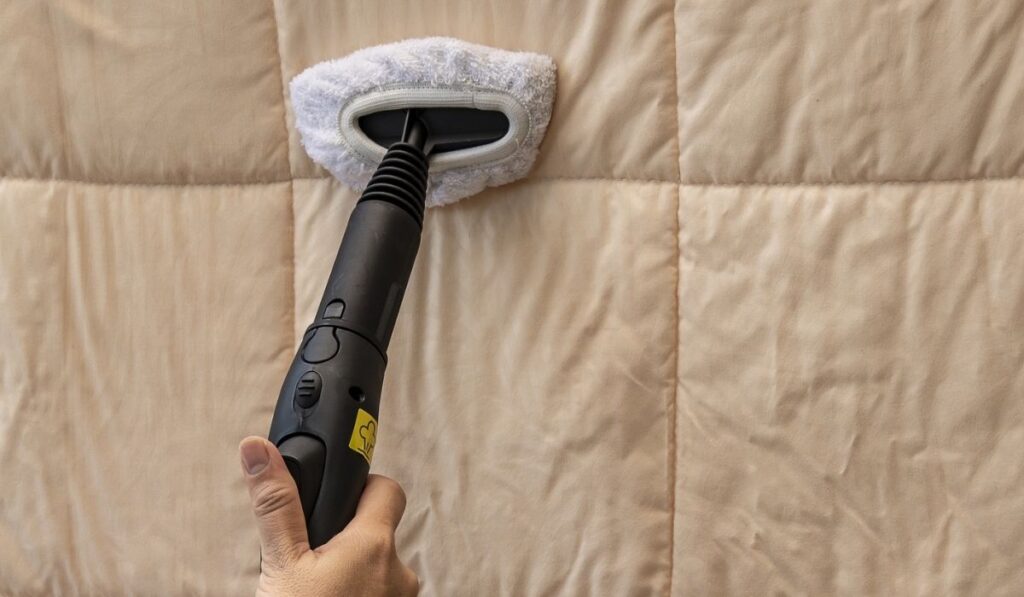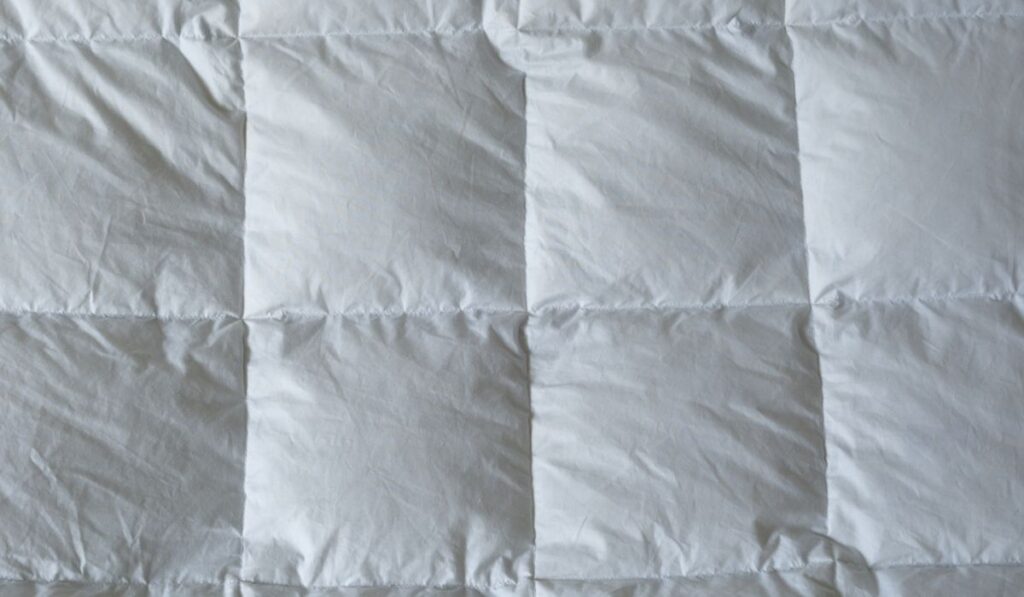A comforter elevates your sleep quality and enhances the look of your bedroom with beautiful colors. However, the bulky bedding is also prone to wrinkles because of the delicate material. If you have a wrinkled comforter, you might be wondering whether you can iron it.
You can iron a comforter, but it must be done very carefully to avoid damage to the sensitive fabric or down filling. Other ways to straighten a comforter include using a wrinkle-remover, hair dryer, or steam cleaner. Washing and drying the comforter may also help eliminate wrinkles.
So ironing is indeed an option, but only if you’re ready to accept the potential risks. The last thing you want is to ruin your lovely comforter while trying to remove the creases. Let’s find out how you can iron your comforter safely and explore other ways to remove the wrinkles without an iron.
Can a Comforter Be Ironed?

Wrinkles tend to affect both new and old comforters. For a new comforter to fit into the packaging, the manufacturers have to squeeze the product, which inevitably causes wrinkles. If you squeeze your comforter into a washing machine, the bedding might become wrinkled. Wrinkles affect the fluffy feel of your comforter and the outlook of your bed.
Risks of Ironing a Comforter
While you can iron a comforter, it’s not necessarily the best way to straighten the bedding. Take special care when ironing a comforter to prevent damage to the fabric and the down inside.
A comforter contains either natural down or synthetic down, and these materials are very sensitive to high temperatures. If you use high heat settings on your iron, you’ll remove the wrinkles but might damage the filling.
Sensitive comforter filling such as goose down, wool, silk, and fur are vulnerable to heat damage. Ironing your comforter without proper care can melt the down in your comforter and ruin that fluffy feel. A comforter with ruined down doesn’t feel warm and crumples easily.
Worse still, ironing might ruin the embellishments on your comforter. The best comforters come with amazing designs that add to the elegance of the bed linen. Comforter embellishments include heavy decorative thread, trims, buttons, ribbons, beads, crystals, and machine/hand embroidery designs.
Ironing a Duvet vs. Comforter
Many homeowners confuse duvets and comforters, which might lead to devastating results when it comes to ironing. Duvets and comforters are popular bed covers, and while they essentially serve the same purpose, their construction is different. A duvet is thicker and has a cover, which makes ironing much easier.
Duvet cover materials include flannel, linen, cotton, and other fabrics. Ironing the duvet cover is easy and poses no risks to the duvet filling. A comforter, however, comes with no cover and the material is more susceptible to heat damage.
How to Iron a Comforter
Ironing might be the easiest way to get rid of the wrinkles quickly, but you’ve got to be careful when doing it. If you wish to iron a comforter, follow these steps to avoid damage to the delicate bedding:
- Avoid the Ironing Board: This large, bulky bedding isn’t easy to handle on a thin ironing board. To easily iron your comforter, find a large, flat surface where you can maneuver the iron easily.
- Pad the Ironing Surface With Bath Towels: Use several bath towels and pad the flat surface. The towels protect your delicate comforter against burn marks or other stains on the ironing surface.
- Mist the Comforter: Spray a mist of cold water on the comforter to make it damp, but don’t saturate it with water. A damp comforter is easier to iron.
- Iron Your Comforter With Care: Set the highest temperatures for the specific type of comforter fabric. The ironing part requires you to move the iron over the embellishments skillfully. Move the iron board softly over the duvet while watching carefully for any raised designs. Turn over the comforter carefully after ironing one side and continue on the other side.
- Dry the Comforter: Dry the comforter before use to allow the downing/fabric to relax. You can set the comforter on a flat surface to dry or hang it up to the air. Drying the comforter eliminates any moisture remaining on the fabric to avoid musky odors.
Other Ways to Remove Wrinkles From a Comforter

Ironing a comforter is a tedious and risky task, but you’ve got a few other options to de-wrinkle your bedding and enjoy a good night’s sleep.
Here are some other ways to remove wrinkles from your comforter:
- Use a Mist Spray: Sprinkle your comforter with a fine water mist while it’s spread on a flat surface. Tug at the edges of the comforter and use your hands to smoothen the bedding.
- Use a Commercial Wrinkle-Release Spray: A commercial wrinkle-release spray (on Amazon) is a step up from the water in wrinkle removal.
- Use Homemade Wrinkle Remover: If you don’t have commercial wrinkle-release spray, mix a teaspoon of fabric softener, a teaspoon of rubbing alcohol, and a cup of water. Spray the mixture onto the comforter.
- Use a Hair Dryer: If the spraying method doesn’t work, try a hairdryer to remove wrinkles from your comforter. Dampen the linen and apply heat using a hairdryer. Move the hairdryer over the comforter and avoid focusing on one spot for too long.
- Wash and Dry the Comforter: Use a front-loading washer and set the required temperature for a machine-washable comforter. Use tennis balls to balance and spread the comforter. Dry your comforter with low-heat settings and throw a wet towel and tennis balls into the dryer. Water from the rag evaporates and smoothens your comforter.
- Use a Steam Cleaner: A steam cleaner uses pressurized steam to dampen the comforter fabric. You can then use your hands to remove the creases.
- Use Your Wrinkled Comforter: If nothing else works, sleep on your comforter. Your body heat and moisture gradually remove the wrinkles.
